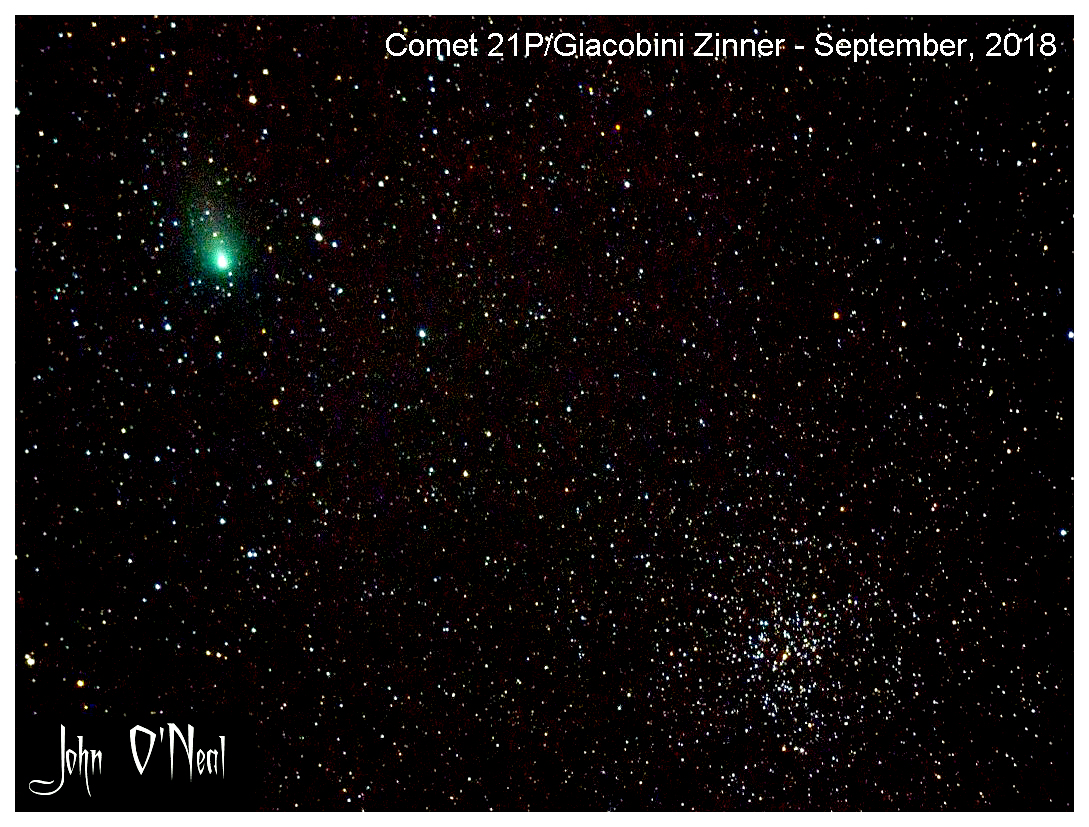Comet Giacobini–Zinner 21P
Giacobini–Zinner 21P is a periodic comet. It was discovered by Michel Giacobini (from Nice, France),
who observed the comet in the constellation of Aquarius on December 20, 1900.
It was recovered two passages later by Ernst Zinner (from Bamberg, Germany) while observing variable stars near Beta Scuti on October 23, 1913.
During its apparitions, Giacobini–Zinner can reach about the 7-8th magnitude, but in 1946 it underwent a series of outbursts that made it as bright as 5th magnitude.
It is the parent body of the Giacobinids meteor shower (also known as the Draconids).
Giacobini–Zinner was the target of the International Cometary Explorer spacecraft, which passed through its plasma tail on September 11, 1985.
In addition, Japanese space officials considered redirecting the Sakigake interplanetary
probe toward a 1998 encounter with Giacobini–Zinner,
but the probe
lacked the propellant for the necessary maneuvers and the project was
abandoned.
The comet nucleus is estimated to be 2.0 kilometers in diameter.

